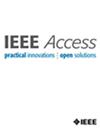Collaborative Coverage Strategy Using Multiple UAVs-UGVs in CRN Mapping
IF 3.4
3区 计算机科学
Q2 COMPUTER SCIENCE, INFORMATION SYSTEMS
引用次数: 0
Abstract
Chemical, Radiological, and Nuclear (CRN) contamination poses a significant threat, potentially leading to mass casualties and long-term environmental repercussions. This paper presents a collaborative framework utilizing a heterogeneous coverage control approach to measure and generate an estimated density distribution map of a designated area. Multiple Unmanned Aerial Vehicles (UAVs) and Unmanned Ground Vehicles (UGVs) are deployed strategically within partitioned regions, determined through weighted Voronoi tessellation. This method integrates both the robots’ internal parameters and environmental factors. The distinct operational domains of UAVs and UGVs facilitate region decomposition by accounting for variations in CRN dispersion, obstacle representation, and environmental conditions. The resulting cross-partitioned regions are systematically merged to enhance robot distribution efficiency. Each robot autonomously measures within its allocated region, updates contamination data, and generates a dispersion map. The proposed strategy enables an adaptive robot distribution, eliminating uncontaminated grids and improving mapping accuracy. Compared to existing methods, including homogeneous schemes, our approach reduces data variance in CRN-contaminated regions while maintaining mapping efficiency.CRN制图中多无人机- ugv协同覆盖策略
化学、放射性和核(CRN)污染构成重大威胁,可能导致大规模伤亡和长期的环境影响。本文提出了一个协作框架,利用异构覆盖控制方法来测量和生成指定区域的估计密度分布图。多个无人机(uav)和无人地面车辆(ugv)在通过加权Voronoi镶嵌确定的分区区域内进行战略部署。该方法综合了机器人的内部参数和环境因素。无人机和ugv的不同操作域通过考虑CRN分散、障碍物表示和环境条件的变化来促进区域分解。系统地合并得到的交叉分割区域,以提高机器人的分配效率。每个机器人在其分配的区域内自主测量,更新污染数据,并生成分散地图。提出的策略使机器人自适应分布,消除未污染的网格,提高制图精度。与包括同构方案在内的现有方法相比,我们的方法在保持制图效率的同时减少了crn污染区域的数据方差。
本文章由计算机程序翻译,如有差异,请以英文原文为准。
求助全文
约1分钟内获得全文
求助全文
来源期刊

IEEE Access
COMPUTER SCIENCE, INFORMATION SYSTEMSENGIN-ENGINEERING, ELECTRICAL & ELECTRONIC
CiteScore
9.80
自引率
7.70%
发文量
6673
审稿时长
6 weeks
期刊介绍:
IEEE Access® is a multidisciplinary, open access (OA), applications-oriented, all-electronic archival journal that continuously presents the results of original research or development across all of IEEE''s fields of interest.
IEEE Access will publish articles that are of high interest to readers, original, technically correct, and clearly presented. Supported by author publication charges (APC), its hallmarks are a rapid peer review and publication process with open access to all readers. Unlike IEEE''s traditional Transactions or Journals, reviews are "binary", in that reviewers will either Accept or Reject an article in the form it is submitted in order to achieve rapid turnaround. Especially encouraged are submissions on:
Multidisciplinary topics, or applications-oriented articles and negative results that do not fit within the scope of IEEE''s traditional journals.
Practical articles discussing new experiments or measurement techniques, interesting solutions to engineering.
Development of new or improved fabrication or manufacturing techniques.
Reviews or survey articles of new or evolving fields oriented to assist others in understanding the new area.
 求助内容:
求助内容: 应助结果提醒方式:
应助结果提醒方式:


